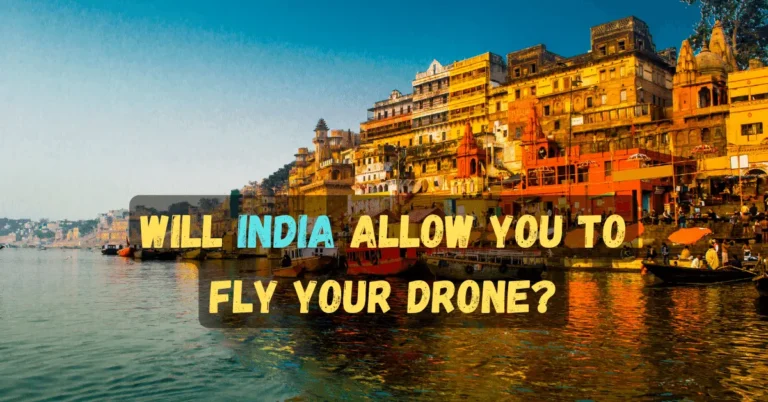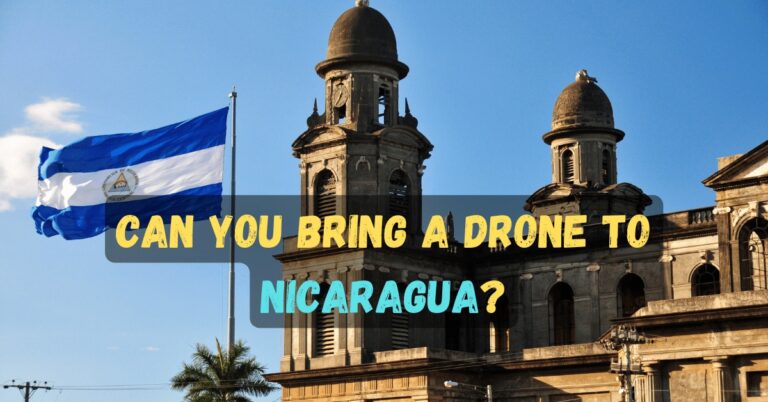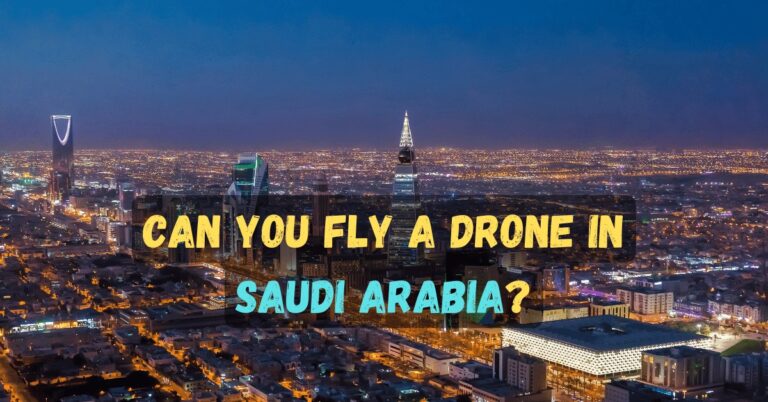What Are the Drone Laws in Bali? (Drone Laws in Bali)

The enchanting island of Bali has long been a magnet for tourists, content creators, and adventurers alike, drawn to its stunning landscapes, vibrant culture, and picturesque sunsets.
In recent years, the advent of drone technology has revolutionized how these visitors capture the island’s beauty.
Drones have become an essential tool for many, enabling the capture of breathtaking aerial footage of Bali’s iconic rice terraces, lush jungles, and pristine beaches.
The Popularity of Drones in Bali
Tourism and Content Creation
Not only are drones popular among tourists seeking to document their travel experiences, but they are also widely used by professional photographers, videographers, and social media influencers.
These content creators leverage the unique perspectives offered by drones to produce captivating visuals that share Bali’s charm with a global audience.
Recreational Use
Beyond tourism and content creation, drones are frequently utilized for recreational purposes, offering hobbyists a chance to explore the skies and capture personal memories from a bird’s-eye view.
Importance of Understanding Local Regulations
Awareness and Compliance
With the growing prevalence of drone usage, it is crucial for operators to be aware of Bali’s local regulations and laws governing drone activity.
Understanding these regulations is essential not only for avoiding legal complications but also for ensuring the safety and privacy of both the drone operators and the general public.
Evolving Rules
As drone technology continues to evolve, so too do the rules and guidelines that govern their use. This underscores the importance of staying informed about the latest regulations to ensure a responsible and enjoyable drone-flying experience in Bali.

Benefits of Adhering to Local Laws
By adhering to local laws and guidelines, drone enthusiasts can continue to enjoy the myriad opportunities that Bali offers for aerial photography and videography, while also respecting the island’s cultural heritage and natural environment.
This introduction serves as a foundation for understanding the importance of responsible drone usage and sets the stage for a deeper exploration of the specific drone laws in Bali.
Indonesian National Drone Regulations
Oversight by the Directorate General of Civil Aviation (DGCA)
Indonesia’s national drone regulations are designed to ensure the safe and responsible use of unmanned aerial vehicles (UAVs).
These regulations are overseen by the Directorate General of Civil Aviation (DGCA), the primary authority responsible for aviation safety in the country.
The DGCA’s role includes setting and enforcing standards for drone operations to mitigate risks and ensure compliance with international aviation norms.
Key Requirements
Drone Registration
One of the key requirements under Indonesian drone laws is the registration of drones. All drones, regardless of their intended use, must be registered with the DGCA.
This process involves providing detailed information about the drone and its operator, essential for both commercial and recreational users.
The registration helps maintain a record of all UAVs and their activities, which is crucial for monitoring and regulatory purposes.

Age Restrictions
Age restrictions are another significant aspect of Indonesia’s drone regulations. Operators must be at least 18 years old to fly a drone.
This age limit ensures that individuals controlling UAVs possess the necessary maturity and understanding of the regulations, thereby minimizing the risk of accidents or misuse.
General Guidelines for Safe Operation
The DGCA stipulates general guidelines for safe drone operation. These guidelines include maintaining a line of sight with the drone at all times, not flying above 150 meters (492 feet), and avoiding restricted areas such as airports, military zones, and densely populated areas.
Additionally, drone operators must ensure that their UAVs do not interfere with manned aircraft or endanger public safety.
The Role of the DGCA
Overall, the DGCA plays a pivotal role in regulating drone activities in Indonesia. By enforcing these regulations, the DGCA aims to create a safe and controlled environment for both drone operators and the general public.
Compliance with these regulations is mandatory, and failure to adhere to them can result in significant penalties, including fines and the confiscation of the drone.
Curious about how high drones can fly? Check out our guide on What is The Maximum Altitude a Drone Can Reach and How Long Does it Take to Reach it?
What are the Specific Drone Rules for Bali?
When it comes to operating drones in Bali, there are specific regulations that both tourists and locals must adhere to, beyond the national guidelines set by the Indonesian government.
Bali’s local authorities have implemented additional rules to ensure the safety and privacy of its residents and the preservation of its cultural heritage sites.
Firstly, drone operators must obtain permission from the local village authorities (known as “Banjar”) before flying in any area.
This is particularly important in tourist spots, beaches, and cultural sites where there are stricter regulations to protect the environment and ensure the safety of visitors.

For instance, popular destinations such as Uluwatu Temple and Tanah Lot have specific no-fly zones where drones are strictly prohibited.
Additionally, drone flights are not allowed over densely populated areas, including major tourist zones like Kuta and Seminyak, without explicit permission.
This rule aims to prevent disturbances and ensure public safety. Drone operators are also required to maintain a safe distance from residential areas to avoid privacy infringements.
Another critical point is the restriction on flying drones near airports. In Bali, Ngurah Rai International Airport enforces a strict no-fly zone extending several kilometers in all directions.
Violating this rule can result in severe penalties, including confiscation of the drone and legal action.
Moreover, Bali’s unique cultural and religious significance means that drone usage is often restricted during specific ceremonies and festivals.
Local authorities may impose temporary no-fly zones during events like Nyepi (Bali’s Day of Silence) or major temple ceremonies to maintain the sanctity and order of these occasions.

While national regulations provide a broad framework for drone operations across Indonesia, Bali’s local rules are tailored to address the island’s specific cultural, environmental, and safety concerns.
Therefore, drone operators must remain vigilant and respectful of these additional regulations to ensure a safe and enjoyable experience in Bali.
Curious about how easy (or hard!) it is to disable a drone? Read on to find out: How Hard is it to Shoot Down a Drone?
What are No-Fly Zones in Bali?
Bali, while a picturesque destination for drone enthusiasts, has specific no-fly zones designed to ensure safety and security.
The primary areas where drone flights are prohibited include regions near airports, military bases, and certain government buildings.
Notably, the vicinity of Ngurah Rai International Airport, one of the busiest airports in Indonesia, is a strict no-fly zone.
This restriction is essential to prevent any interference with aircraft operations, ensuring the safety of both airborne and ground activities.
Military bases across Bali are also designated as no-fly zones. These areas are crucial for national security, and unauthorized drone flights could pose significant risks.

Similarly, certain government buildings, including the Governor’s Office and other critical infrastructures, are restricted to protect sensitive information and maintain public order.
Beyond these specific locations, several cultural and religious sites in Bali, such as temples and heritage areas, might have their own drone restrictions.
These places often hold significant cultural value and are frequented by large numbers of tourists and locals. Unregulated drone flights in these regions could disrupt the serenity and sanctity of these sites, leading to potential disturbances.
The rationale behind these restrictions is multifaceted. Primarily, it centers on safety concerns, ensuring that drone operations do not interfere with manned aircraft or pose hazards to people on the ground.
Security is another critical factor, with drones potentially being used for surveillance or other malicious activities. Finally, respecting cultural and religious sites is vital to preserving the unique heritage and traditions of Bali.
Compliance with these no-fly zones is not only a legal requirement but also a mark of responsible drone usage.

Understanding and adhering to these regulations helps foster a safer and more respectful environment for everyone, ensuring that both drone operators and the public can coexist harmoniously in Bali’s beautiful landscape.
What are Drone Permit Requirements in Bali?
Operating a drone in Bali necessitates obtaining a proper permit to ensure compliance with local regulations. The process of obtaining a drone permit involves several steps and requires specific documentation.
Firstly, applicants must complete an application form provided by the Directorate General of Civil Aviation (DGCA) in Indonesia. This form can typically be found online or at local DGCA offices.
Upon completing the application form, operators must submit a copy of their passport, a detailed flight plan outlining the intended areas of use, and proof of insurance covering potential damages or accidents.
Additionally, a letter of recommendation from a relevant Indonesian authority or organization might be required to support the application.
These documents help ensure that drone activities are conducted responsibly and with due consideration for public safety.
Regarding fees, the cost of obtaining a drone permit in Bali varies depending on the type and duration of the permit. Generally, there are two primary types of permits available: a short-term permit, which is valid for up to 30 days, and a long-term permit, which can extend up to one year.
The short-term permit typically incurs a lower fee, while the long-term permit, offering extended operational privileges, demands a higher fee.

Once the application and documentation are submitted, it usually takes a few weeks for the permit to be processed and approved.
Applicants should plan accordingly to avoid delays in their drone operations. It is crucial to adhere to the specified validity period of the permit, as operating a drone without a valid permit can result in fines and legal repercussions.
Understanding and adhering to these permit requirements is essential for anyone looking to operate a drone in Bali.
By following the outlined steps and ensuring all necessary documentation is in order, drone operators can enjoy their activities while remaining compliant with local laws and regulations.
Curious about the process? Let’s dive into controlling a drone using Bluetooth! [What is The Process For Controlling a Drone Using Bluetooth?]
What are Penalties for Violating Drone Laws in Bali?
Operating drones in Bali without adhering to established regulations can result in significant penalties.
The local authorities have instituted a range of administrative and legal consequences to ensure compliance with drone laws, safeguarding both public safety and privacy. Violations can lead to fines, confiscation of equipment, and, in severe cases, imprisonment.
One of the most common penalties is the imposition of fines. These financial penalties can vary depending on the gravity of the violation.
For instance, flying a drone without the necessary permits can incur a fine ranging from IDR 5 million to IDR 25 million.
The exact amount is determined based on factors such as the location of the flight and whether the drone operation posed any immediate danger to people or property.

Additionally, authorities have the power to confiscate drones and related equipment if the operator is found to be in violation of the law.
This measure ensures that individuals who fail to comply with regulations cannot continue to operate drones illegally. Confiscation is often accompanied by fines and can serve as a deterrent to prevent future infractions.
In more serious cases, violators may face legal proceedings that could lead to imprisonment. For example, flying a drone in restricted areas such as near airports, military bases, or other sensitive locations can result in severe legal consequences.
If such actions are found to endanger national security or public safety, operators could face imprisonment for up to one year or more, depending on the severity of the offense.
Common violations include flying drones in prohibited areas, operating without proper permits, and failing to adhere to altitude restrictions.
Each of these infractions carries specific penalties designed to enforce the safe and responsible use of drones.
For instance, operating a drone above the maximum allowed altitude can result in fines and confiscation, especially if it interferes with manned aircraft.

Understanding and adhering to drone laws in Bali is crucial for avoiding these penalties. By doing so, drone operators can contribute to a safer and more regulated airspace, ensuring that the technology is used responsibly and effectively.
Not sure if your drone sports a Remote ID? Check out our guide to find out! [Does My Drone Have a Remote ID?]
Tips for Safe and Legal Drone Flying in Bali
Flying drones in Bali can be an exhilarating experience, offering unique perspectives of the island’s stunning landscapes and vibrant culture.
However, to ensure your drone operations are both safe and compliant with local laws, it is essential to follow a few key guidelines.
Firstly, always check the weather conditions before taking your drone out for a flight. Bali’s weather can be unpredictable, with sudden shifts from calm skies to heavy rain or strong winds.
Flying in adverse weather conditions can not only damage your drone but also pose significant safety risks to people and property below.
Maintaining a clear line-of-sight with your drone is another critical aspect of safe flying. This means keeping your drone within your visual range at all times.
Losing sight of your drone can lead to accidents, particularly in areas with obstacles such as buildings or trees. Additionally, this practice is often a legal requirement in many jurisdictions, including Bali.

Respecting privacy is paramount when operating a drone. Avoid flying over private properties or capturing images and videos without consent.
Intruding on someone’s privacy can lead to legal repercussions and negatively impact the perception of drone enthusiasts in the community.
Another important tip is to steer clear of crowded areas. Flying drones over large gatherings or busy streets can be dangerous and is generally prohibited.
Not only does this minimize the risk of accidents, but it also ensures that you are not violating any local drone laws in Bali.
Lastly, staying informed about updates to local regulations is crucial. Drone laws can change, and it is your responsibility to stay current with any new rules or restrictions.
Regularly check official sources or consult with local authorities to ensure your drone activities remain compliant.
By following these tips, you can enjoy the breathtaking beauty of Bali from above while ensuring that your drone flying is both safe and legal.
Curious about headless mode and how it makes drone flying easier? Dive right in for a complete explanation!
Resources and Contacts for Further Information
For those seeking to ensure compliance with drone laws in Bali, a variety of resources and contacts are available to provide further information.
It is crucial to stay informed about the regulations to avoid any legal complications and to ensure the safety of both the drone and the public.
One of the primary sources of information is the Directorate General of Civil Aviation (DGCA) under the Ministry of Transportation of Indonesia.
The DGCA’s official website provides comprehensive guidelines and updates on drone regulations. You can visit their website at hubud.dephub.go.id for the latest information.
The local authorities in Bali, such as the Bali Provincial Government, can also be contacted for region-specific regulations.

Their official website, baliprov.go.id, offers contact details and additional resources that may be useful for drone operators.
For community support and discussions, online forums and social media groups dedicated to drone enthusiasts can be invaluable.
Websites such as DJI’s official forum and the r/drones subreddit provide platforms for users to share experiences and advice on flying drones in Bali.
Additionally, several apps and tools can assist in planning safe drone flights. Apps like AirMap and UAV Forecast offer real-time information on no-fly zones, weather conditions, and other essential data to ensure your flight complies with local regulations.
By utilizing these resources, drone operators can responsibly enjoy their flights in Bali while adhering to the necessary legal requirements.
Staying informed and prepared not only enhances the safety and enjoyment of your drone activities but also contributes positively to the broader drone community.







